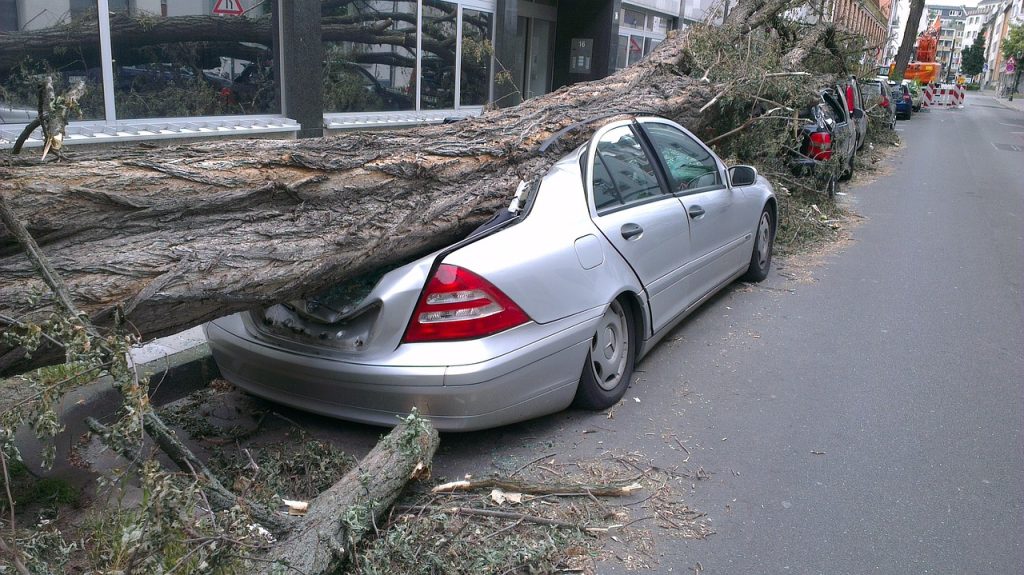Top Factors to Consider When Comparing Auto Insurance Rates
To ensure they get the lowest premiums and the best coverage, consumers need to review and compare auto insurance quotes. They should not choose their policy based on a catchy commercial.
Some characteristics and equipment on your vehicle can be used to get best auto insurance rates.
At specific points in your car’s life, it is a good idea to revisit and modify the coverage. This includes when: purchasing a vehicle; adding or removing another individual from your car insurance; or adding the car insurance deductible if an accident happens.
Whether your car is old or new, comparing the costs of various automobile insurance options is the perfect way to save a great deal of money on auto insurance.
Factors Affecting Auto Insurance Rates
When buying auto insurance, remember that companies tend to give customers quotes based on a number of different factors. Here are a few factors affecting auto insurance rates:
1. Driving Record
If you drive a lot, you will pay more for coverage. That’s why you can be seen as less of a risk if you take public transportation to work or only have a short commute.
If you are a low-mileage driver policyholder, you will pay less for insurance because, since you don’t drive often, you have low risks of accidents.
There are also programs where you can pay as you go. Signing up for this type of coverage might help you save money if you do not drive very much. Driving programs require the use of a vehicle tracking device, which we would want to avoid.
2. Vehicle Type
Different types of vehicles can have a large impact on the premium, as not all types of vehicles are created equal in terms of risk.
Your car model and year of registration are the first factors to consider when getting quotes for car insurance. The insurer will consider how costly your car is to replace or repair and how likely it is to be stolen or physically damaged.
Vehicles from the most popular brands are generally more expensive, as there are many similar models on the road, and they’re easier to steal if spare parts are easy to find for potential thefts.
However, how big your car is may also impact your premium, at least to a certain extent.
Technologically advanced features, extra power from the engine, or even more expensive spare parts when available will play a role in the final auto insurance rates.
Therefore, if you drive any Audi S, BMW M series, Chevy Corvette, Lexus LC or RC F, S-class Mercedes, Mercedes SL roadsters, BMW i8, Maserati Quattroporte, or most recent Teslas, you will pay a lot more for your car insurance.
3. Age and Gender
Research has pointed to the possibility that drivers as young as 16 years old are at a higher risk for accidents, which is one of the likely reasons why insurance premiums tend to be higher for these younger drivers. Also, older women are much safer drivers than older men.
According to a survey, premiums generally do not begin to increase due to a driver’s age until the driver is 60 years old; after age 60, there is a consistent increase in annual premiums.
This is because the older lines of insurance are more likely to experience loss exposures brought on by things such as health limitations.
Or it could be true that as a person becomes a more seasoned driver, one takes on a “casual” attitude when it comes to driving, assuming that they can always avoid a collision even if they lose concentration for a moment.
According to a survey, the gender with the highest premiums is males, up to 18%; males are between 35-50, while women’s premiums are as much as 3.8% less.
4. Location
Rural small towns have lower vehicle insurance rates. Urban areas have higher accident rates, leading to a higher auto insurance premium. It is more likely that a vehicle will be stolen or that there will be more incidents that cause property damage or personal lawsuits in cities.
Car insurance companies might charge higher rates to cover the increased risks associated with certain factors. For example, living in a rural area might mean you’re less likely to file claims for damage to or theft of your vehicle.
So, with lower vehicle insurance needs, that leads to lower premiums. In addition, simple lifestyle factors such as the behavior of residing in a rural area make them less likely to cause theft or collisions in those places.
These contributing factors make it beneficial for vehicle insurance companies to charge low rates for living in these areas, where it is less risky to insure plan holders.

Coverage Options
Keep in mind that if you see a policy with a low price, it’s probably because the policy doesn’t cover what you really need to have covered.
1. Liability Coverage
Accidents happen, and they can become quite costly if you are deemed at fault.
On the one hand, there is the potential for property damage to the other driver’s vehicle as well as to private property. There is the risk of causing injury to others or even to yourself, which may require medical treatment and time off work.
It is for these reasons that most states mandate auto insurance. The question becomes, just how much coverage is enough?
There are a few factors to consider when trying to decide how much liability you need. For one, experts recommend getting enough to cover the value of one’s assets.
That way, if you are indeed at fault for an accident, injuries and property damage that exceed the limits of your liability will be covered by your assets.
The personal net worth rule can provide a guideline for how much insurance one needs in order to protect their assets from a lawsuit.
This rule states that in general, if a person’s net worth exceeds $500,000, it is recommended to buy a policy with at least enough liability coverage to protect those assets.
A second thing to consider is state legal requirements. Every state has minimum required coverage levels for liability, and failing to provide proof of insurance at a traffic stop could lead to repercussions of varying degrees of severity.
2. Collision Coverage
Collision coverage provides benefits in the event of damage to your car due to a collision. It can be an accident, damage caused by hitting a lamp post, or running over a pothole.
It can also be an incident in a parking lot, and the driver can be at fault or the other driver can be at fault. This is one of the most important coverages out there, given that most of us drive cars, which are very important to us.
These are expensive materials, and a collision can happen to our vehicle at any moment. Collision tends to be one of the more expensive coverages, but it’s also something that you’ll need if you carry a loan or a lease on your vehicle.
With collision, you are allowed to pay a deductible for this, and this will help you raise or lower the rate of the coverage.
3. Comprehensive Coverage
Comprehensive coverage kicks in when damage happens to your vehicle that isn’t the result of a car-on-car collision.
Covered incidents typically include theft, vandalism, hitting an animal, or anything else that causes damage to your car while it is parked or while you are out driving it.
If in doubt, think about what kind of loss might occur to your vehicle that wouldn’t involve hitting someone else’s vehicle. If it’s on that list, it’s likely covered by your policy’s comprehensive insurance.
Again, the deductible you choose will have a big impact on the cost of your comprehensive coverage. When choosing a deductible, it’s a good idea to consider what you can afford to pay out-of-pocket if your car is damaged in a comprehensive event.
The lower your deductible, the more you’ll pay in premiums, so you need to find a happy medium with the deductible you choose.
4. Personal Injury Protection
Personal injury protection, or ‘PIP’ refers to a type of medical payment coverage in a vehicle insurance policy. It helps protect you against the cost of medical care and other related costs if you are involved in an accident, even if you were at fault.
Typically, PIP coverage could help cover (or partially cover): medical bills if needed; limited lost income from work; funeral costs; child care; other essential services.
Take a look at whether they offer PIP (Personal Injury Protection) or not It is an important coverage, and all good insurance carriers offer it.
5. Full Coverage
Having full-coverage auto insurance means that you are essentially considering a policy with both liability and collision insurance. This insurance can replace your car, repair it after an accident, or help pay medical bills related to an accident.
Full-coverage auto insurance typically includes coverage for theft, vandalism, weather-related damage, and more. While it might not cover everything, you can customize it to suit your individual needs.
Discounts
The availability of discounts is a major consideration to keep in mind when comparing auto insurance rates. Discounts provide an easy way to save on insurance.
1. Safe Driver Discount
Safe driving discounts are one of the most popular discounts given by most auto insurance firms. As long as you’re consistently safe behind the wheel, you may be able to receive some serious financial benefits for your actions.
Safe driver discounts generally apply to drivers who avoid receiving any violations or accidents for a year. When signing up for a new policy, a safe driver rebate for up to ten years may be available to you, depending on which firm you choose.
If you ever violate these discounts, they are not forever set in stone. It is highly possible for offers and possibilities to be returned to you by your insurance provider if you’ve stayed loyal and taken the necessary classes to maintain a clean driving record.
2. Multi-Policy Discount
Multi-policy discounts are known as auto-insurance package deals or dual or multiple folding agreements, but the name does not matter because they all mean the same thing.
If you purchase more than one policy through the same agency, the multi-policy discount is always applied, but it may not be the lowest comparable rate.
Just because you will be saving some money does not mean you will be saving the most money. When considering a multi-policy discount, you should never rest until you have found the lowest comparable rate.
3. Good Student Discount
A good student discount will help you save money on your auto insurance rates.
By achieving good grades, you can qualify and save up to 15%, as well as set the stage for being eligible for future discounts since the rate of accidents among young drivers is heightened.
In many cases, you must be able to provide proof of your GPA or school transcript to qualify. Typical cut-off points are a 3.0-3.5 GPA or being on the Dean’s List.
Most insurance companies won’t apply the discount until a policy renewal, so work with an independent insurance agent to make sure you are being quoted every eligible discount.
4. Anti-Theft Device Discount
Auto insurance companies want to ensure that your car is less likely to get stolen or vandalized. That’s why many insurers offer discounts of 5% up to 30% if you have certain anti-theft devices installed.
The number one anti-theft device in the United States is an alarm, and virtually all companies will give you a discount if you have one.
Although alarms are very basic these days, you need to have a shock sensor to detect any cracks around the windshield, a motion detector or impact sensor to protect the car’s doors and trunk, and a central processing unit that distinguishes common sounds like a plane passing overhead.
Your car’s theft-deterrent system shouldn’t go off just because a loud sound is heard. This is why alarms are so expensive to install, but once you have one, you will save money on insurance and pay less on car theft-related expenses.
It’s estimated that consumers save approximately $12 billion each year on vehicle theft-related expenses.

Customer Service and Claims Process
Insurance companies with excellent customer services and efficient claim process will definitely charge your more premium.
1. 24/7 Support
Many insurance companies in Houston, Texas, provide 24/7 support by phone and online, which is helpful when you need to file a claim, ask a question, or make changes to your policy outside of regular business hours.
Some companies also offer in-person support, so consider how important it is for you to have a local agent.
Even though you may have much of your documentation in a paperless format, you still might want to coordinate with an insurance company that does have brick-and-mortar locations.
2. Claims Handling Efficiency
Insurance companies offer claim processing as a service to their clients, and how efficiently they handle claims can significantly affect customer satisfaction and the overall experience.
Some companies have faster, more efficient claims handling systems in place, which can be a beneficial consideration.
Processing auto claims typically involves the following basic steps:
- A claimant contacts an insurance company to file a claim.
- The information has been submitted.
- The company reviews the coverage.
- The company may contact the claimant.
- The company arranges an appraisal or repair.
- After the appraisal or inspection, the company makes a settlement offer.
- The claim proceeds to resolution.
You must consider the time for each step and the nature or results of each step when evaluating an insurer’s potential claim service.
3. Customer Satisfaction Ratings
Another factor to consider when shopping for affordable car insurance is customer satisfaction ratings. Reliability is the most important factor when looking for car insurance.
You’ll want to go with reputable providers because they’re more likely to handle customer complaints well and honor their agreements.
It’s always a good idea to start by comparing the customer service of the best auto insurance companies as reported by our in-depth guides, which can help you pinpoint some of the best car insurance in the market quickly.
Conclusion: Top Factors to Consider When Comparing Auto Insurance Rates
Comparing auto insurance includes requesting quotes, choosing the right coverage, and understanding what elements will impact your car insurance rate. To make efficient comparisons, it’s important to research prices from a variety of auto insurance companies.
You can use some car insurance comparison factors to leverage a better deal for your policy. You may see yourself as a safe driver, but that doesn’t mean all insurers see you the same way.
Make sure you’re getting the discounts you deserve. Frontline workers, teachers, military members, and more could qualify for premium savings. And if you use telematics, also known as usage-based insurance, it can be a great way to prove good driving.
Many insurers use telematics devices to track your driving, others may only require you to download an app.






